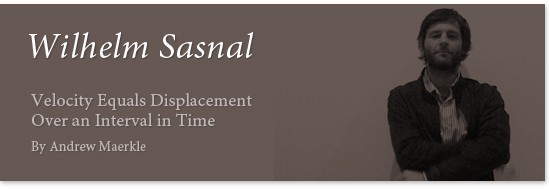
Born in 1972 in Tarnów, Poland, Wilhelm Sasnal is among a new generation of contemporary artists who emerged following the country’s transition from Communist to democratic rule in 1989. He is best known for making paintings that combine elements of representation and abstraction to depict images based on photographs that he takes himself or that he finds in other sources ranging from books to films and websites.
As such, these paintings maintain a delicate balance between personal intimacy and distanced irony. Common subjects for Sasnal include his own family and experiences as well as the history of Poland and the role the country played in the Holocaust during World War II. At other times he “documents” the landscape around Tarnów where he was raised, often using expressive brushstrokes to communicate atmosphere through minimalist gestures, or he will obliterate key details from his source images, as with the painting Untitled (After Metinides) (2003), which blurs behind a flurry of monochrome hues everything but some figures loitering in the background of an airplane crash site that had been photographed by the Mexican photojournalist Enrique Metinides. Yet it is hard to say whether for Sasnal any one subject is more or less personal, or more or less ironic than the next.
What one can say is that Sasnal is a keen observer of the human environment, which is also apparent in his separate practice as a filmmaker. Shooting primarily with a 16mm camera, Sasnal imbues his films with a painterly eye that is attune to the viscosity of action, the taffy-like bonds that hold together the plastic world. For example, in Marfa (2005), Sasnal’s camera lingers on oil that spills out from the car he is having refurbished and seeps over the bare, fleshy torso of a gargantuan mechanic. In The Ranch (2006/07), he is absorbed by the nonchalant barbarity of ranch hands dehorning and castrating young bulls, zeroing in on the freshly shorn testicles frying on a makeshift grill and the men gingerly picking the sizzling meat up with their fingers.
ART iT met with Sasnal when he came to Tokyo for the opening of his solo exhibition at Rat Hole Gallery, “16mm films,” which includes both recent paintings as well as the short films Marfa, Love Songs (2005) and Centrum (2004). He discussed with ART iT the relationship between his films, the landscape and his paintings, as well as his youth growing up in Poland and his stance toward the country’s history. Considering Sasnal’s practices as painter and filmmaker in tandem, it’s tempting to see him as equal parts satirist and off-kilter ethnographer. However, the idea that the artist intends to make an overarching statement about social conditions is always undermined by the inclusion in his works of his own subjective viewpoint.
As Sasnal told ART iT, he responds to the world through intuition, a way of seeing or feeling that circumvents the rational order of things. His work is distinct because it finds a unique space between the trivial and significant.
I. Like Everyone Born in the 1940s, My Mother Was a Fan of Elvis
II. Silent Landscapes Begin to Speak
III. Don’t Let the Sun Go Down on Your Grievances
